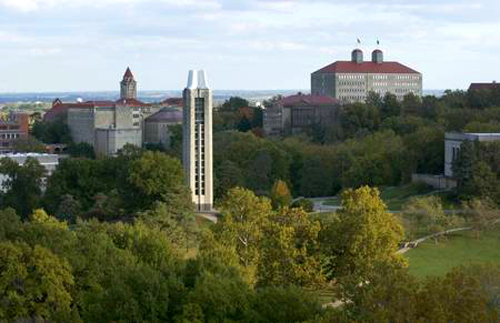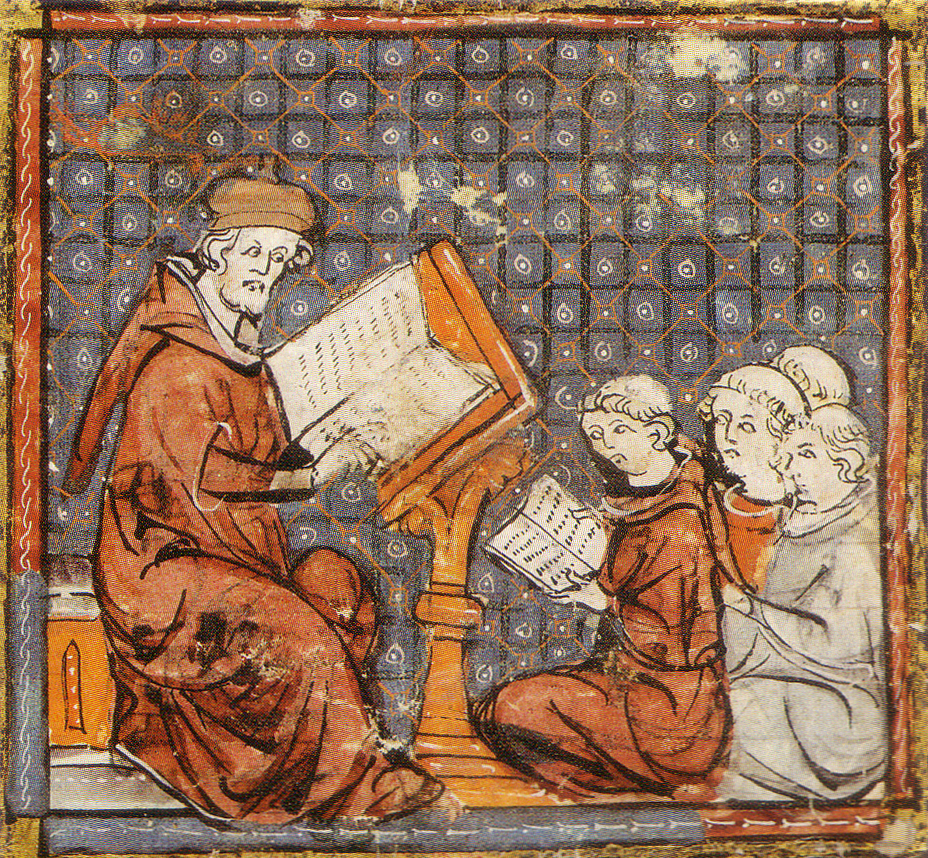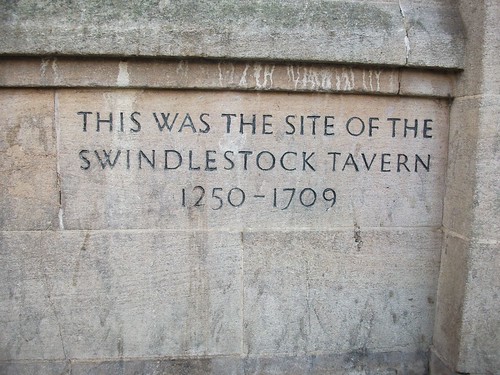St. Scholastica Day Riot and Town and Gown
656 Anniversary of the St. Scholastica Day Riot brings Town and University Relations into Perspective
Town and Gown
Attending a commuter college like UT El Paso, I admit that it is not the college experience that one will get in a college town. Midway through my Bachelors, I visited CU Boulder and was enthralled with the college town. I applied, was accepted, but the question of money kept me from attending. By then UTEP had grown on me. It was not until law school in Lawrence, Kansas did I get to experience a college town: the real town and gown.
 |
| Mt. Oread, Lawrence, Kansas |
The Peoples Republic of Lawrence, as some Kansas conservatives called it, or as some leftist call it with a wink of their left eye. Lawrence had a local Anarchist collective and bookstore and for God sakes, if anti-war protesters burned down the union and ROTC building during the Anti-Vietnam War Movement, it had to be good. It is a nearby Mt. Oread neighborhood that is keeps a watchful eye on KU as the university covets thy neighbor's property.
Get Ready to Rumble
However, one should not get to comfortable in a college town. Disputes between the community and the university are constant and they are nothing new. Landowners living on the edge of the university are always attentive to the universities future desire for their land.
On February 10, 1355, town and gown relations were taken to an extreme in Oxford, England. As with most modern college riots, it all began in a bar, or tavern (bar sound too American). In Swindlestock Tavern, two students complained about the quality of the drinks. Words led to insults and insults led to blows and, of course, I'm not talking about the sexual ones: the students threw their drinks at the taverner's face and beat him.
The Oxford mayor's request that the university's chancellor arrest the students was to no avail. Students who supported the beer-throwing scholars, 200 in number, attacked the mayor and others. For two days, Oxford rioted leaving 63 scholars and 30 locals (mas o menos) dead. The town finally got the upper hand, defeating the students.
Later, the dispute was settled in the university’s favor. Under the settlement, annually, on Feb. 10, the mayor of Oxford and councilors had to march bareheaded through the streets. Furthermore, they had to pay the university a fine of one penny for every scholar killed during the riot. This would occur annually for the next 470 years until 1825, when the mayor that year finally refused to participate. In 1955, Feb. 10, the town and the gown commemorated the St. Scholastica Day Riot giving the mayor an honorary degree and the Vice-Chancellor was made an Honorary Freeman.
Some of histories Gown-Town Altercations
I've read two histories about the founding of Cambridge. One was that it was founded because a dispute between Oxford scholars. A group of Oxford scholars finally left and founded Cambridge. The other version says that the dispute was between town and gown. It was locals and some scholars forcing other scholars to flee. Others say the scholars left on their own accord like the Paris Student Strike of 1229 (see below).
1229 University of Paris
A riot started by students at the University of Paris caused the university to leave Paris for two years. During this time in Europe, students were typically young, entering at age 13 or 14 and staying at the university for 6 to 12 years.
 |
| 14th Century depiction of students in Paris |
The students wore clergy wardrobe and shaved their heads like monks. During a Mardi Gras-like festival called Shrove Tuesday, students were drinking and a fight broke out between students and a tavern owner.
Unlike Oxford, this did not involve bad drinks, but the bill. The students were beaten and thrown out of the tavern. Students, with their numbers swelled, returned the next day for vengeance. The student mob broke into the tavern, beat the perpetrators from the night before, and destroyed the tavern. A subsequent riot erupted in the streets.
As the university was under the jurisdiction of the church, the students considered like clergy, the students could not be brought into the government courts and had to be taken to Pope's courts. These courts were reluctant to charge the students.
Finally, the regent of France (the French king was a kid at this time), demanded something be done about the students and the university finally authorized the Paris police to punish the rioters. Some police later killed some students and the university responded by striking. Students were transferred to other universities, and classes ceased in Paris. The so-called “student quarter” of Paris began to suffer economically.
The Pope would intervene (the Pope was a University of Paris alumnus) granting the university independence from local authority, either ecclesiastical or secular. The university would return to Paris after two years.
14th Century Lisbon
Scholars at the University of Lisbon in Portugal left Lisbon and went to Coimbra over a dispute. The scholar later returned to Lisbon.
Riots can get you into Yale - 18th Century
In 1701, the president of Yale in New Haven, Connecticut, began hosting Sunday services for students on campus as opposed to having the students attend church in New Haven. The president did not like one the local preacher's theology. This alienated many Connecticut clergy and so has been the relationship between New Haven and Yale.
In 1806, a riot erupted between Havener sailors and Yale students. This one involved weapons. In 1841, Yale students clashed with the local fire department. The student attacked the firehouse and destroyed equipment. New Haveners then threatened to burn the college. The military had to be sent in to maintain peace.
In 1854, a fight brewed up between New Haveners and Yale students in a theater resulting in the stabbing of the town leader. New Haveners brought two militia canon and aimed it at Yale, but were stopped by law enforcement before cannonballs could demolish at Yale.
Of recent, and I mean the 20th Century, serviceman returning from World War I attacked the campus after they thought they were being insulted by students. The gates of the university were locked so the serviceman broke windows before moving into the town to riot breaking windows of theaters and restaurants. They also assaulted any student they could find.
In 1959, a snowball fight on New Haven's Streets erupted into a brawl in which police had to break up. Students would pelt the police with snowballs -- and it wasn't even the 60s.
Now, I won't get into student protest as this mostly involves student-on-university disputes as opposed to student/college-town disputes. Similar to the historic Oxford and Paris riots, most modern rampages have involved alcohol.
Boulder Disputes
Boulder, Colorado was the location of a beer riot by students upset over stricter enforcement by police of bars checking identification at bars to cut down on under-age drinking. Furniture was burned on the streets, beer bottles were thrown.
 |
| Riot in Kingston, Canada |
Queen's University (Kingston, Canada) had a similar incident of a party escalating into a riot. In 1995, 1,500 party goers showed up to Ezra Street in Waterloo, Ontario (location of Wilfrid Laurier University). Resulting from the alcohol consumption, a riot erupted resulting in 42 arrests. One woman was hit by a piece of concrete and a man was run over by a jeep.
50 Years of Town vs. Gown
An example of a town and gown conflict that has not involved violence but over 50 years of disputes, is the City of Washington and Washington and Jefferson College in Pennsylvania. In the late 60s, master plans called for the campus to expand into Washington neighborhoods and the university would purchase new homes in the area as they became available.
One neighborhood got itself named a historic district to combat the university's expansion. Meetings about expansion would culminate into shouting matches between residents and university officials.
In the 1990s, the city council defeated a proposal to close some streets around the campus. Later, the city tried to remove the university tax-exempt status. In 1995, the city tried to enact a service fee for municipal services, a services fee targeted at students.
In 1998, a new president would try to foster better relation between the city and the university, producing a Blueprint for Collaboration. However, strife was not over as in 2008, the university wanted to purchase an alleyway that ran through campus. The purchase was blocked by city council, but later the city gave the alleyway to the school.
Gym Crow
In the 1960s, one incident between town and gown did not involve students against university, but student assisting the community. Columbia University wanted to construct a gymnasium in a Harlem public park. The proposed design had a “back door” entrance for blacks. It was quickly labeled “gym crow” by Harlem residents and Columbia students.
 |
| Columbia University |
Furthermore, others were against the appropriation of public park land in Harlem when Harlem residents would only get limited access to the gym. Several protests by the community and students would follow. Since 1958, Columbia University has evicted more than 7,000 Harlem resident from Columbia-owned property.
Mardi Gras in New Ore... no San Luis Obispo
In San Luis Obispo, there have been town and gown conflicts over the annual Marti Gras celebration. The city is a popular state-wide destination for the Marti Gras festivities and in 2004, the city tried to end public celebrations.
 |
| Police move in on Marti Gras Celebration in San Luis Obispo |
Previous Marti Gras had small-scale parties that evolved into large celebrations attracting thousands. In 2004, a riot erupted between party goers and police. After parties were shut down, an estimated 5,000 people rioted. Two hundred people were arrested and the police had to use crowd control tactics to break up the crowds. The city would later triple fines for specific ordinance during Marti Gras, especially alcohol-related offenses, underage drinking, public nudity among others. A bill was later introduced to the California legislature that called for the dismissal of any student convicted of breaking the penal code. The estimated cost of policing these celebration has come out to over $1,000,000 for San Luis Obispo.
So one should not get so comfortable, whether they be students, as locals may get fed up; or if they be locals, the students may get fed up. So when thinking about canceling a Cesar Chavez Holiday, not funding a Chicano Studies Program, better think twice.
As for the town – make sure to serve good beer.











No comments:
Post a Comment